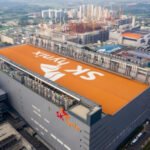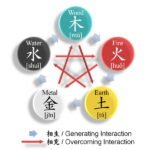
South Korea has decided to finance its $200 billion US investment package through foreign-exchange earnings and newly issued government-guaranteed bonds, in a move designed to support strategic US projects while insulating the Korean economy from financial risk.
According to government and the ruling party sources on Thursday, the Ministry of Economy and Finance and the Bank of Korea have agreed to raise up to $20 billion a year for the 20-year investment program by diverting interest and dividend income from the country’s $422 billion in foreign reserves and issuing dollar-denominated bonds through a new, government-backed US investment fund.
The plan was finalized after an emergency review of Korea’s foreign-exchange operations and liquidity conditions.
The structure aims to avoid tapping state fiscal resources or disturbing foreign-exchange markets.
On Wednesday, Korean President Lee Jae Myung and US President Donald Trump agreed that Seoul will invest $200 billion in cash in the US economy over 20 years, part of a broader $350 billion investment framework – but with an annual ceiling of $20 billion.

The $350 billion commitment consists of a $200 billion cash investment and $150 billion in shipbuilding cooperation.
SCHEMES TO PROTECT KOREA’S FX MARKET, FINANCIAL SYSTEM
“We wanted a design that minimizes both losses to the foreign-exchange reserves and shocks to the financial system,” said a government official involved in the discussions.
As of the end of September, the Bank of Korea held about $360 billion of its reserves in US Treasuries and other securities, generating some $15 billion in annual returns.
Until now, those earnings were reinvested in low-risk assets, but under the new framework, a portion will be redirected to the US investment fund.
The remaining $5 billion will come from the issuance of bonds by the newly created “US Investment Fund,” backed by government guarantees and financed by borrowing a portion of foreign reserves.
Notably, the government ruled out the use of policy banks such as Korea Development Bank and the Export-Import Bank of Korea for dollar fundraising, citing concerns that additional borrowing would inflate their leverage ratios and force capital injections, sources said.
Instead, the US Investment Fund will issue sovereign-backed debt at lower costs and without adding to public liabilities.

Multiple layers of US investment protection, including an “umbrella” special-purpose vehicle (SPC), will shield Korea’s foreign-exchange reserves from potential investment losses, according to sources.
Officials said the arrangement would have a limited impact on the dollar-won exchange rate because it avoids the need to sell the Korean currency for dollars on the open market.
HYBRID MODEL WITH PRINCIPAL PROTECTION
The funding and profit-sharing structure of the $350 billion US investment is unprecedented in scale and complexity, blending equity and debt features to mitigate risks.
With the $200 billion investment equal to about 47% of Korea’s foreign-exchange reserves, the government is seeking to ensure full principal protection through layered guarantees and repayment triggers.
The US Investment Fund will channel money into long-term, higher-risk projects such as Alaska’s liquefied natural gas (LNG) infrastructure, marking a sharp shift from the Bank of Korea’s traditional focus on safe, low-yield US Treasury holdings.
Under the new “hybrid” model, part of Korea’s contribution will take the form of mezzanine or hybrid debt, combining features of equity investment and lending.

The structure includes a “refixing” clause allowing Seoul to rebalance its profit share if principal repayment falls short within the 20-year term, a mechanism commonly used in venture capital to mitigate loss risks.
“This is a government-to-government investment commitment, so we were able to design a structure that doesn’t exist in private markets,” said a senior Seoul official.
The umbrella SPC, which will oversee multiple sub-funds tied to individual projects, is intended to ring-fence risks and ensure repayment priority.
HIGHER-THAN-US TREASURY RETURNS
Korea’s share of profits will be split 50-50 with the US until full principal recovery, after which the distribution will shift heavily in Washington’s favor – 9 to 1 – reflecting the US’ role in hosting the projects.
The investments are expected to deliver yields above those on long-term US Treasuries.
Kim Yong-beom, Seoul’s presidential policy chief, said on Wednesday that the investment return would be “about 1.1 percentage points higher than the 20-year Treasury rate,” implying an annual yield of 5-6% versus the current 4.6% on 20-year US government bonds.

That rate gives Korean policymakers confidence that the new structure will not weaken the country’s external balance, analysts said.
SIGNIFICANT CONCESSIONS BY WASHINGTON
Analysts said Wednesday’s trade and tariff deal represents significant concessions by Washington.
Despite earlier insistence by Trump that the entire $350 billion investment commitment be paid up front, the final agreement allows for phased funding over at least a decade and gives Korea strong protections against currency and credit risk.
“Washington realized that forcing Seoul into a massive one-off cash investment could destabilize Korea’s reserves, and that would not serve US interests either,” said a senior Seoul government adviser.
The result, officials say, is a rare alignment of financial prudence and strategic cooperation – a hybrid investment model designed to bolster both economies while keeping Korea’s foreign reserves intact.















